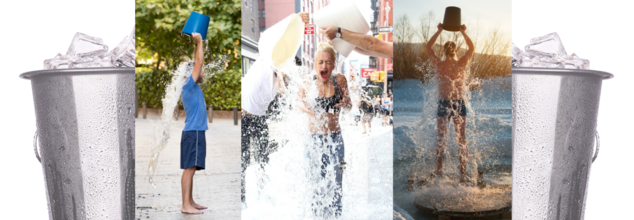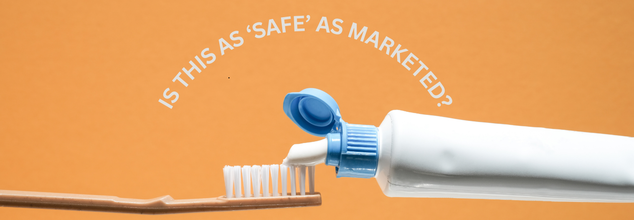
Ice Bucket Challenge Returns In 2025 With A Powerful New Mission
In 2014, the Ice Bucket Challenge swept the internet, raising over $115 million for ALS research and transforming how the world engaged with health-focused crowdfunding. A decade later, the viral phenomenon is making a comeback — but with a poignant new purpose: mental health awareness. In 2025, a group of passionate students at the University of South Carolina (USC) have reimagined the concept into a movement called #SpeakYourMIND, an initiative that’s already raising both funds and conversations for the nonprofit Active Minds.
What began as a tribute to ALS (Amyotrophic Lateral Sclerosis), a debilitating neurological condition, has evolved into a broader commentary on an equally urgent but often less visible public health crisis — mental health. This revival isn’t just about viral stunts; it’s about starting real, transformative dialogue.
Spearheaded by Wade Jefferson, a USC junior and mental health advocate, the new challenge is the centerpiece of the Mental Illness Needs Discussion (MIND) club’s campaign. Jefferson, who founded the club after the tragic loss of two close friends to suicide, envisioned a way to break down stigma and make mental health discussions more accessible, especially among youth. “We wanted to create something visual, visceral, and participatory — a challenge that could remind people how necessary it is to speak up,” Jefferson said.
How the New Ice Bucket Challenge Works?
Much like the original Ice Bucket Challenge, #SpeakYourMIND involves participants filming themselves pouring buckets of ice water over their heads, then nominating others to do the same. But this time, the emphasis lies in sharing personal stories or supportive messages around mental health, tagging friends, and donating to Active Minds.
Launched on Instagram in March 2025, the campaign’s momentum has exceeded all expectations. Initially hoping to raise $500, Jefferson and his team watched donations quickly soar past the $100,000 mark — and counting. High-profile supporters, including former NFL stars Peyton Manning and Emmanuel Sanders, have amplified its visibility.
Mental health conditions frequently emerge during adolescence and early adulthood — yet support systems, conversations, and awareness remain woefully underdeveloped in schools and colleges. According to Brett Curtis, Director of Community Fundraising at Active Minds, the campaign couldn’t have come at a more important time.
“Seventy percent of youth and young adults don’t know how to talk to a friend about mental health,” Curtis explains. “That’s a huge barrier. But when students lead these kinds of initiatives, it becomes more relatable, and people start opening up.”
Data from the National Institute of Mental Health (NIMH) shows that one in five adults in the United States lives with a mental health condition. Among teens and young adults, the rates of anxiety, depression, and suicidal ideation have sharply increased in recent years, intensified by the pandemic, social media pressures, and societal instability.
By giving youth a platform to lead the conversation — instead of just being the focus of it — the #SpeakYourMIND challenge is helping shift the culture of silence to one of empathy and openness.
The campaign’s virality is evident in its geographic spread. From South Carolina to Maryland to Denmark, participants are posting their videos with the hashtag #uscmind. Interestingly, the acronym “USC” has caused some amusing confusion online, with many assuming the campaign originated at the University of Southern California. In reality, it is Columbia, South Carolina, where this student-led movement first took shape.
This international visibility mirrors the widespread attention that the original Ice Bucket Challenge received in 2014. That version saw everyone from Oprah Winfrey to Bill Gates to President George W. Bush taking part, with the funds benefiting the ALS Association.
The ALS Association has now extended its support to the mental health initiative, acknowledging the power of viral philanthropy to mobilize change, regardless of the cause. “The format worked once to bring awareness to a little-known disease,” said a representative from ALSA. “There’s no reason it can’t work again — this time for mental health.”
While the icy splash garners attention, organizers like Curtis stress that the heart of the campaign goes deeper than donations. “This isn’t about how much money you can give or how many likes your video gets,” he says. “It’s about making mental health a normal part of everyday conversations just like physical health.”

Credits: Canva
Indian-Origin Doctor Found Guilty in Major US Health Care Fraud Case
A federal jury in Pennsylvania found an Indian-origin physician, Neil Anand, 48, guilty of a series of serious charges, which involve healthcare fraud, illegal drug distribution, and money laundering. The conviction was announced by the US Department of Justice on Wednesday. This marks an essential development in a broader effort to crack down on healthcare-related crimes in the United States.
What Exactly Went Down?
Dr Neil Anand was convicted of orchestrating a complex healthcare fraud conspiracy that amounted to $2.3 million. The scheme was the illegal distribution of controlled substances, including oxycodone.
Oxycodone is a powerful and potentially addictive opioid. The drug has also been at the center of the opioid epidemic that has claimed hundreds of lives across the US over the past two decades.
As per the prosecutors, Anand issued a pre-signed prescription for oxycodone, which was then used by unlicensed medical interns to distribute the drugs to nine of his patients. While this is a small number of recipients, the number of tablets distributed is a big one. A total of 20,850 tablets of oxycodone were issued. This is an alarming figure, given that the drug is known for its high risk for addiction.
The "Goody Bags"
It did not just end to prescribed rug abuse, but to fraudulently billing health insurance companies and government insurance plans for "medically unnecessary" prescription medications.
These medications were distributed as a part of what the prosecutors called "Goody Bags". These were packages of various medicines that patients received through pharmacies owned by Anand himself.
These prescriptions were not only unnecessary but were used as a precondition to access the controlled substances. The insurance providers, unaware of the deception, ended up paying a total of $2.3 million for this unneeded drugs. This combination of drug distribution and fraudulent billing is what led to the serious charges of healthcare fraud.
Anand also tried to hide the proceeds from the fraud and transferred $1.2 million into an account under his father's name. He claimed that it was for the benefit of his minor daughter. Authorities saw this as an attempt to launder the money and keep it away from legal scrutiny.
What Is To Be Followed?
This is not the first time Anand has been charged. He was first charged in 2019, along with four other individuals, three of them were his co-defendants and were also reportedly foreign medical graduates who did not possess licenses to practice medicine in the US. He is now awaiting his sentence which is scheduled for August.
One of the prosecutors in the case is Arun Bodapati, an attorney in the Fraud Section of the US Justice Department’s Criminal Division.
Similar Cases
A similar case of a doctor fraud also happened in India. Though, the case did not involve any money laundering it did put a lot of lives at risk. Here, a man posed as UK doctor in India. The man is Narendra Vikramaditya Yadav. He is accused of posing as a British-trained cardiologist and allegedly performing surgeries that led to the deaths of seven of his patients. The 53-year-old used an alias of Dr N John Camm, had been working at a Mission Hospital in Damoh, Madhya Pradesh.

(L to R) Central Prison in Viyyur, Kerala; Tihar Jail, Delhi; and District prison in Mandya district, Karnataka (Wikimedia Commons and Central Jail, Government of NCT of Delhi)
Recent Report Reveals The Dire Condition Of Indian Jails, Inmates Not Given Proper Healthcare
Jail time, like everyone knows, is of course not an ideal situation to be in. However, like all, even the inmates are to be granted their basic rights, which include medical facilities. However, as per the India Justice Report 2025, inmates in Indian jails cannot avail these facilities. Indian jails are overcrowded, and they lack medical and mental health professionals.
Why Are The Numbers Concerning?
The report reveals that the national average occupancy rate of Indian jails are more than 131%. This means that there is of course overcrowding, leading to hygiene concerns, which eventually puts health at risk. The report also noted that India's prison inmate population will reach 6.8 lakh by 2030, while the capacity is only likely to grow to accommodate 5.15 lakh inmates.
This does not stop at space, but to health staff too. For the entire nation's prisoners, there are only 25 psychologists. The report has clearly noted that mental illness cases have risen from 4,470 in 2012 to 9,084 in 2022. On the contrary, the vacancy for medical officers are at 43%.
The report titled the State of Public Health in India's Prison: India Justice Report 2025 - Finding on Gaps in Staffing & Medical Health Care also threw light on the model prison manual, 2016. This sets the benchmark for the prison to doctor ratio, which must be 300 prisoners to 1 doctor. However, the report notes, the national average "far exceeds that, standing at 775 prisoners per doctor."
There is also non-availability of health data on prisoners who enter jail with a disability or those who acquire disability during their time in the prison.
ALSO READ: BeerBiceps Opens Up On Latent Row's Impact On His Mental Health
How Are Inmates Health Impacted?
As aforementioned, overcrowding is also a source of communicable disease. Between 2012 to 2022, there has been a concerning upward shift in prison population. The report reads: "The total number of people incarcerated has gone up from 3.8 lakh to 5.7 lakh; national occupancy rates have spiked from 112% to 131%. Overall, the 27% increase in prison housing capacity between 2012 and 2022 (from 3.4 lakh to 4.3 lakh) has not kept pace with need. Levels of overcrowding have also escalated. For instance, in 2012, Maharashtra averaged a 99% occupancy rate but in 2022, this had increased to 161%,’’
As per the 2023 Lancet Public Health studies, incidence of TB in Indian prisons is 1,076 cases per 100,000 persons in prisons. One of the main reasons is overcrowding. Furthermore, another study published in the International Journal of Infectious Diseases in 2017, notes that diagnostic and treatment services for TB were available in 18% and 54% of prisons respectively. The study noted: "Only half of the prisons screened inmates for TB on entry, while nearly 60% practised periodic screening of inmates."
The study also noted: "Prisons are known to be a high risk environment for tuberculosis (TB) due to overcrowding, low levels of nutrition, poor infection control and lack of accessible healthcare services."
Another report from 2023, published in the Indian Journal of Psychological Medicine, titled Health Status of the Prisoners in a Central Jail of South India, noted "Health care in prisons is one of the neglected health areas in our country."
The study found that 9.6% of the inmates from that particular jail suffered from acute upper respiratory tract infections, 5% from acute lower respiratory tract infections and 18% had ascariasis. "Diseases of musculoskeletal system and connective tissue contributed to 26 (8.7%) of inmates. A total of 252 (84%) prisoners had anemia. In sociodemographic profile, it was found that rural people, unmarried, illiterates, lower socioeconomic status people were more likely to have committed the crime resulting in the conviction for life," the study read.
Another 2023 study published in the International Journal of Conflict and Violence, titled The State of Prisons in India During Covid-19: The Impact on Incarcerated Prisons, noted: "The Coronavirus created an alarming situation in Indian prisons, where overcrowding exacerbated the problems."
The study quoted The Commonwealth Human Rights Initiative (CHRI) report that in the second wave of the pandemic starting 1 March 2021, there were a total of 5,960 infected prisoners and 646 infected prison staff,
with 28 Covid-related deaths of prisoner and six deaths of prison staff. A total of 177,071 prisoners were vaccinated with the first dose and 85,443 had been given the second dose as on September 2021.
"Overcrowding and lack of sanitation and health facilities acted as catalysts in the spread of the virus in prisons," the study pointed out.
Mental Health Of Inmates Stay Ignored
The India Justice Report also pointed out that as of 2022, no State or Union Territory met the benchmark of one psychologist per 500 inmates. Only 69 sanctioned posts for psychologists and psychiatrists are there to cater across India's 1,330 prisons and 5.7 lakh inmates. Not even half of these positions were filled.
Valay Singh, who is the lead author of the India Justice Report said, "The data records the presence of only 25 or one for every 22,929 prisoners. Twenty-five States/ Union Territories make no provision for a psychologist or psychiatrist within their cohort of correctional staff."

Credits: Canva
Popular 'Safe' Toothpaste Brands Contain Heavy Metals, Finds Study
In other news, another study has raised concerns about the safety of what people consume on a daily basis. Amid all the things that we know of, which consists heavy metals, your regular used toothpaste is also now on the list. As per the consumer advocacy group Lead Safe Mama, a large number of popular toothpaste products contain heavy metals. These are lead, arsenic, mercury, and cadmium. The study also found that those marketed as safe for children too contain these metals.
How Was The Research Conducted?
The organization tested 51 different toothpaste brands. The results then revealed that 90% of these samples were contaminated with lead. Of them, 65% contained arsenic, and nearly half had mercury, while one-third tested positive for cadmium. The Guardian was the first one to report these findings.
What Inspired This Research?
Tamara Rubin, who is the founder of Lead Safe Mama, has been investigating heavy metal contamination for over a decade now. Her interest began when she saw families whose children had alarmingly high levels of metals in their blood. Her past observations have also already highlighted the content of Earthpaste, which had raised concerns.
She said that these recent findings were "unconscionable - especially in 2025". She also criticised the companies which were involved for failing to take responsibility or initiate corrective measures. “None of the companies dragged after the outcome admitted to working towards eliminating lead from their toothpastes,” she said. Instead, some brands reportedly issued cease-and-desist letters in response to Rubin’s findings, which she publicly addressed on her blog, tamararubin.com.
Which Popular Brands Are On The Red Flag List?
The report noted for some of the top-selling toothpaste brands in the US, including the ones which are marketed as safe for children. The brand names are:
- Crest
- Sensodyne
- Colgate
- Tom’s of Maine
- Dr Bronner’s
- Davids
- Dr Jen
- Dr Brite
What Ingredients Do These Toothpastes Contain?
Rubin’s research suggests that certain ingredients are consistently linked to higher levels of heavy metal contamination. Specifically, hydroxyapatite, calcium carbonate, and bentonite clay were found to be contributing factors.
Bentonite clay, often included for its cleaning properties, showed the highest levels of contamination. Hydroxyapatite, known for aiding calcium absorption, and calcium carbonate, commonly used for stain removal, were also found to contain troubling amounts of lead and other metals. Toothpastes that did not include these ingredients—such as Dr Brown’s Baby Toothpaste—were free of contamination, according to the findings.
What Has Been The Brands' Response?
The companies who have been red listed have responded, however, all in different ways. While some offered explanations, others have downplayed the findings. Dr Jen's for instance shared a graph with Lead Safe Mama which showed their toothpaste's metal concentration was well below the US Food and Drug Administration's safety thresholds.
However, Rubin challenged this defence, arguing that the FDA’s limits are outdated and not aligned with the current scientific consensus. “All federal agencies agree that there is no safe level of lead exposure for human beings, especially children,” she stated. In a pointed rebuttal, Rubin added, “I expected more from you. I assumed your product would not have harmful toxicants that could impact my children.”
She also criticised Dr Jen’s for using safety standards intended for fluoride toothpaste, noting that the tested product was non-fluoride, for which safety limits are even stricter—and still too high in her view.
What Do Experts Say?
The US Centers for Disease Control and Prevention (CDC) maintains that no level of lead exposure is considered safe. However, the loophole is that while the reports may have found lead levels which do not exceed the federal limits, but they do surpass state limits in Washington and California, and many more like them.
California’s legal lead limit in baby food is six parts per billion (ppb), and the Baby Food Safety Act of 2024 aims to cap children’s food lead levels at 10 ppb. However, the toothpaste samples flagged by Lead Safe Mama frequently exceeded these numbers, raising broader questions about regulatory oversight and consumer safety.
© 2024 Bennett, Coleman & Company Limited

